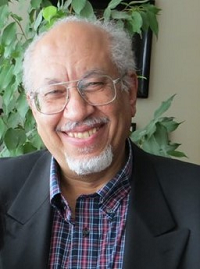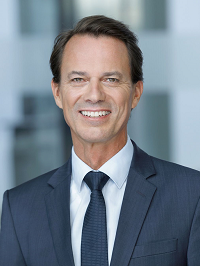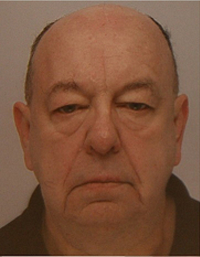
|
|
|
Keynotes Speakers
Helmi Attia, Ph.D. , P Eng., FASME, FCIRP, FSME, FIAAM Biography Helmi Attia is a Principal Research Officer, and former Manager of Advanced Material Removal Processes, Aerospace Manufacturing Technology Centre, National Research Council Canada (NRC). Before joining the NRC in 2002, he was a Principal Research Engineer at Ontario Hydro Research Division (1980-2002), and Manager of Fabrication Technology at Spar Aerospace Technology Ltd. (1979-80). He is an Adjunct Professor of Mechanical Engineering at McGill University since 2002, and Adjunct Professor, Chalmers University of Technology, Sweden. He held also Adjunct Professorship with Concordia University (1981-1990) and McMaster University (1991-2002). Helmi is professional engineer of Ontario since 1980. He is a Fellow of SME (Society of Manufacturing Engineers), Fellow of the College International pour la Recherche en Productique (CIRP), and Fellow of the American Society of Mechanical Engineers (ASME). He is the recipient of ‘Queen Elizabeth II Diamond Jubilee Medal’ (2013), and the prestigious ‘ASME Blackall Machine Tools and Gage Award, (1989). He received numerous recognitions from ASME and ASTM for being the principal organizer and editor of symposia related to manufacturing and tribology. Helmi is on the editorial board of a number of international journals and was an Associate Editor of the ASME Transactions, Journal of Engineering for Industry (Metal cutting), 1990-1996. Helmi Attia is recognized by his peers in the areas of machining, thermal deformation of machine tools and fretting wear/fatigue. To his credit, Helmi has authored/coauthored some 260 papers in archival journals and refereed conference proceedings, and some 125 technical research reports. He was also the principal editor of 6 ASME and ASTM books and bound volumes. Abstract : Surface Integrity in Machining Aerospace Materials and Its Impact on Functional Performance Surface integrity is one of the most critical output of a machining operation. It has significant impact on the safety, performance, and fatigue life of aerospace components subjected to dynamic loads in harsh environments. The typical aspects of machining-induced integrity including residual stresses, surface roughness and defects, microhardness, near-surface microstructure modification, dynamic recrystallisation and grain refinement are discussed and correlated to the variables of machining system. Special attention is paid to how to control the machining-induced residual stresses by optimizing the cutting parameters, tool geometry, and the cooling strategy. Post-processing options, such as shot peening, burnishing and laser-assisted surface treatment are discussed as means for mitigating induced surface defects and for further improving surface integrity. The fundamental aspects of residual stress formation during cutting are discussed in relation to: (a) the contribution of thermal and mechanical loads and (b) the effect of the coupling of thermal load and phase transformation. In addition to its effect on fatigue life reduction, the effect of machining-induced residual stresses on the distortion of thin-walled aerospace components is assessed in comparison with the magnitude of distortion produced by the bulk stresses. An overview of the effect of cryogenic cooling strategy of selected difficult-to-machine materials, aerospace alloys, and lightweight materials on machining-induced residual stresses is presented and compared to dry, minimum quantity lubrication, and flood cooling.
Thomas Bergs, Prof. Dr.-Ing., MBA Biography Thomas Bergs is head of the Chair of Manufacturing Technology at the Laboratory for Machine Tools and Production Engineering WZL at RWTH Aachen University. In his capacity as a Member of the Board of Directors of the Fraunhofer Institute for Production Technology IPT Aachen, he also leads its Process Technology Division. Born in 1967 he studied mechanical engineering at the University of Duisburg GH and the RWTH Aachen University. He graduated in 1995 having written his diploma thesis at the Engineering Research Center for Net Shape Manufacturing in Columbus, Ohio. In 2001 he went on to earn a doctorate in engineering at the RWTH Aachen University for which he was awarded the Borchers Plaque. He also graduated as an Executive Master of Business Administration in 2011. Thomas Bergs was a research associate in the Process Technology Section at the Fraunhofer Institute for Production Technology IPT in Aachen from 1995 to 2000. In the year 2000, he was appointed Manager of the Laser Engineering Group and of the Business Unit »Aachener Werkzeug- und Formenbau« (Aachen Tool and Die Making). From 2001 until 2018 he also held the position of Managing Chief Engineer. Thomas Bergs additionally was the Managing Director of Aixtooling GmbH in Aachen, whose core area of expertise is in tool making for the precision glass molding sector. As the successor to Professor Fritz Klocke, Thomas Bergs was appointed as Professor at the Chair of Manufacturing Technology at WZL in 2018. Abstract : From Process Signature to Digital Twin for Part Surface Integrity in Manufacturing The keynote gives an overview on the development of digital twins for manufacturing processes based on the concept of process signatures to describe the influence of the machining process on the workpiece and therefore the resulting final part quality. It especially focuses on the industrial- and application-driven perspective to develop the digital twin for the physical assets – meaning the workpiece. The keynote will also consider the tool, which can also be represented as a digital twin in its usage phase, interacting with the workpiece. This is straight forward in its methodology development as the physical asset reflects the only directly applicable data and information carrier along its overall life cycle from the manufacturing up to the use phase of the components involved. The individual manufacturing process is finally indirectly represented by the modelling of the mechanical, thermal and chemical material loads and the resulting surface modifications during the interaction as a kind of “transfer function” represented by the process signature. The contribution exemplarily shows the current state of realization for various manufacturing processes, the potential benefits of this new approach and necessary next steps for successful implementation. It will also provide a general framework, how to implement the digital twin approach in a digital manufacturing environment.
Guillaume Kermouche, Professor at “Mines Saint-Etienne” France, head of the “Physics and Mechanics of Materials” group, deputy director of the Georges Friedel Laboratory (LGF) Biography After a MSc degree in Mechanical Engineering in 2002, G. Kermouche received his PhD in Mechanical Science (Tribology, Mechanics of Materials) in 2005 from “Ecole Centrale de Lyon”. He received the award of the best PhD thesis in tribology in France (HIRN award). G. Kermouche was first appointed as an assistant professor in ENI St-Etienne from 2006 to 2012 before joining “Mines Saint-Etienne” as a full professor in 2012. In 2015, he was a "visiting professor" for 4 months at McGill University (Montreal, Canada) in the group of Professor Chromik in the "Mining and Materials Engineering" department. Guillaume Kermouche’s main contributions deal with the measurement and the modelling of mechanical properties of materials at the micronscale, and microstructure evolution induced by surface thermomechanical loadings, i.e. dynamic recrystallization, grain fragmentation … He is particularly involved in the development of (sub)surface characterization methods to investigate consequences of manufacturing processes in terms of surface integrity. In the very past few years he developed novel approaches to investigate small-scale mechanical properties under extreme conditions (high strain rate, high temperature). Abstract : On the use of nanomechanical testing to characterize transformations of materials induced by surface manufacturing processes. Surface manufacturing processes - such as machining, shot peening, burnishing, polishing … - are known for their consequences on surface integrity. They are mostly triggered by repeated and intense contact loadings leading to large plastic deformation, high strain strain rate and high temperature rise in the near-surface. A significant in-depth gradient of mechanical properties is usually observed over 10 to 100 µm depending on the process. This gradient is a consequence of near-surface materials transformation and can play on materials performance (fatigue, stress-corrosion, wear). The accurate characterization of the mechanical properties of these new materials at the right scale is therefore of primary importance. It can be made through the use of suitable methodologies based on nanomechanical testing –i.e. micropillar compression, nanoindentation. The nanomechanical testing field is actually reaching a maturity level that allows its deployment to materials transformation induced by surface manufacturing processes. The first part of this presentation will be dedicated to a brief review of the last developments in the nanomechanical testing field, with a special focus on high temperature, high strain rate and fatigue testing. The second part will deal with the application of nanomechanical testing to investigate consequences induced by manufacturing processes. More specifically, various cases ranging from severe shot peening to sliding friction contacts are investigated. The last part of this presentation will focus on a new high-temperature nanoindentation procedure developed on purpose to investigate the thermal stability of these surface-processed materials.
Philippe Gilles , Expert consultant for AREVA group, GEP-INT Consulting CY Keynote sponsored by the institut Carnot Ingenierie@Lyon Biography Philippe Gilles graduated ENSMA, a top French university for mechanics and aeronautics. During 4 years, he worked on fatigue crack path prediction at the French research institute of aeronautics O.N.E.R.A. He joined AREVA-NP (Formerly FRAMATOME) in 1981. He was assigned as Technical Manager of the IPIRG program, and was a Visitor Scientist at Battelle Columbus Division in 1988. He participated to numerous international conferences and research projects. In 1990, he has been appointed senior expert in Fracture Mechanics. In 1995 he developed a J-estimation scheme for elbows now included in the French RSEM code. He managed during more than ten years a large Research and Development activities in the mechanical field on the large components. The corresponding activities covered a large spectrum: design, fatigue, fracture, and welding and wear numerical simulation. In 2006 he was appointed AREVA Fellow for the AREVA group. He was in charge of expertise for the AREVA group in the domain of mechanics and materials. In 2013 he belonged to the Scientific Direction of AREVA within AREVA BS. His highest priority task was to develop within AREVA the numerical simulation of manufacturing, welding and mitigation treatments processes. For this purpose he supervised several theses, masters or post-doctorate and he maintains active excellent connections with laboratories working on these topics in Europe and Asia. He has published more than one hundred and seventy papers. In 2016, he created a French Limited Company GEP-INT offering services in Fracture Mechanics, welding simulation and surface integrity. At present he is consulting for AREVA. Abstract: Surface integrity in civil nuclear industry Nuclear plant components are designed for long term operation and to withstand severe accidents. According to the reactor type, their components are submitted to high pressure or high temperatures, thermal shocks, seismic events. Therefore, structural integrity is the main concern in nuclear engineering. The second matter is the aging of materials by irradiation embrittlement, loss of ductility under in service temperature generation of cracks by fatigue or corrosion. The third matter is the prevention of fast fracture. These three issues are addressed at the design level, by a selection of materials minimizing aging and exhibiting a minimum fracture resistance. Standards and specifications are required to prevent or to detect defects at the manufacturing and welding steps. Over the plant’s operating lifetime, in service inspection is conducted on the boundaries of the coolant systems. In the past decade, stress corrosion and thermal fatigue cracking problems led to define guidelines introducing surface treatments such as laser de-sensitization or compressive residual stress. Furthermore, visual examination or pressure vessel components has taken increased importance. Vendors and utilities have conducted a considerable amount of R&D studies on the effect of machining on surface integrity and developed mitigation techniques such as laser shock or water jet peening. In nuclear plants, surface integrity issues are addressed through several recommendations included in construction and maintenance codes as well as in mitigation procedures. However, a link should be made between surface finish characterization, residual stress fields and subsurface behavior laws in the perspective of integration at the design stage.
Bernhard Karpuschewski, Professor Biography Bernhard Karpuschewski graduated from the University of Hannover, Germany. He received his Ph.D. degree in 1995 with a thesis titled “Micromagnetic surface integrity analysis of case hardened steel workpieces” at the Institute for Production Engineering and Machine Tools (IFW), University of Hannover. From 1995 until April 1999 he worked as chief engineer of the Institute. From May 1999 until October 2000 he accepted a position as Associate Professor at the Keio University, Yokohama (Japan). Following this he was appointed as full professor for production engineering and head of the Laboratory for Production Technology and Organisation (PTO) at the Technical University of Delft (Netherlands), where he worked until March 2005. From April 2005 until August 2017 he worked as full professor for production engineering and managing director of the Institute for Production Technology and Quality Management (IFQ) at the Otto-von-Guericke-University in Magdeburg (Germany). Since September 2017 he is professor at the University of Bremen (Germany) and director of the Division Manufacturing Technology at the Leibniz Institute for Materials Engineering IWT. Since August 2001 he is a member of the International Academy for Production Engineering Research (CIRP) and became a fellow in 2005. He is currently Editor-in-chief of the CIRP Journal. Abstract : Process Signature – Knowledge-based approach towards function-oriented manufacturing Surface layer properties are of crucial importance for the functional behavior of manufactured components. For the vision of a function-oriented production, the relevant surface layer properties for the considered functional properties (e.g. fatigue strength, corrosion resistance) are to be generated by an adequate selection and adjustment of the manufacturing process. In order to accomplish this in a resource-efficient manner, extensive knowledge about the impact of manufacturing processes on the workpiece material is required. During the process, the material responds to external loads (e.g. process forces, temperature in the contact zone) which are transformed into internal material loads (e.g. strain, temperatures within the material, chemical potential), which then are responsible for the resulting material modifications (e.g. changes in hardness, residual stress, chemical composition). The correlation between material modifications and internal material loads is described in Process Signatures. This keynote shows exemplary Process Signatures and their use in generating targeted surface layer properties. The key scientific challenges are developments towards a deeper understanding of the underlying mechanisms leading to modifications in the microstructure and the derivation of suitable descriptive quantities for the responsible internal material loads, which can usually only be obtained from process simulations. Based on this, a prediction and knowledge-based generation of depth profiles of surface layer properties is possible, wherefore first approaches are presented in this keynote.
|
| Online user: 2 | Privacy | Accessibility |

|





